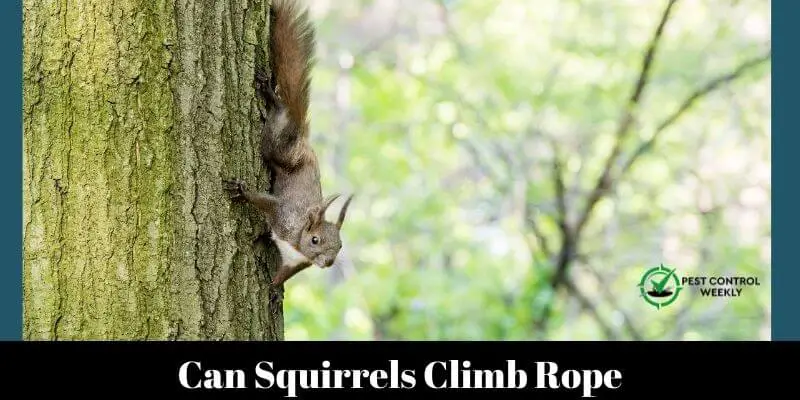Squirrels have strong paws, sharp claws, and a strong will. These characteristics enable them to climb many vertical surfaces. But I’m curious, can squirrels climb rope.
Yes, squirrels can climb the rope. Squirrels are active and enjoy jumping and climbing on strings to keep them busy and protect themselves from predators.
Squirrels can climb a rope by gripping it with their claws and moving on a 10 to 11-foot cord. They do this to retain their bodies engaged through these activities. Keep reading the article to know why they climb ropes and how to stop them from climbing.
Why Do Squirrels Climb A Rope?
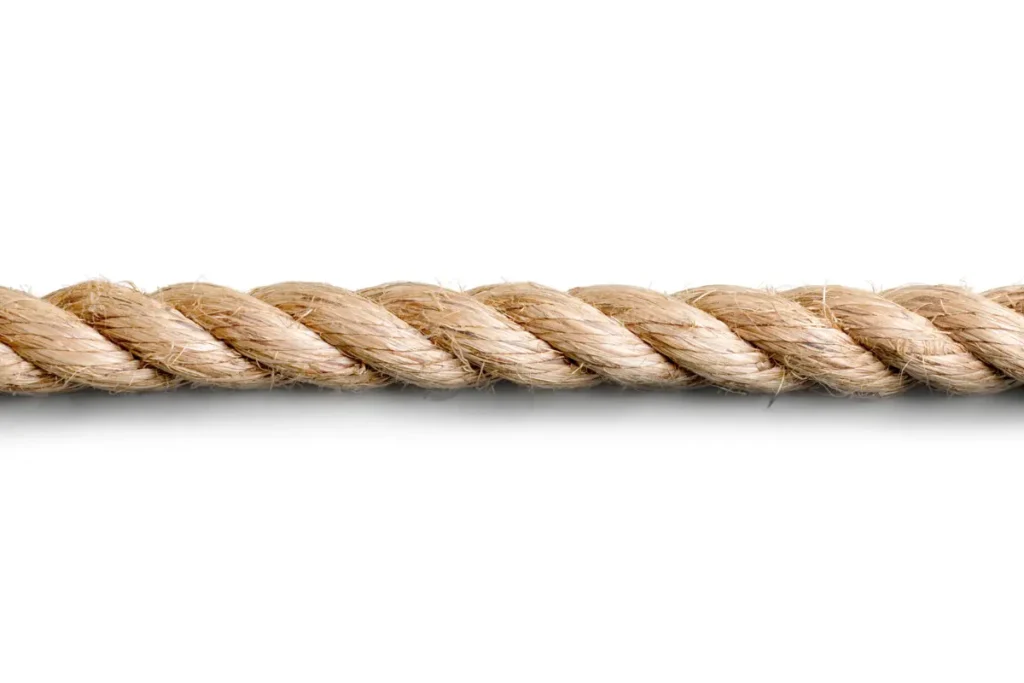
They climb on the rope for enjoyment, and this activity keeps them active all day. They constantly chew the shells of acorns and nuts to keep their jaws busy. They require different chewing materials to sharpen their front teeth in such cases. Ropes are appealing to them, and they climb over them.
A few gardeners construct a rope bridge for decoration. In these cases, the squirrels will climb over the bridge or rope and use it as an escape route. They defend themselves against human and animal predators.
Snakes, foxes, and birds are natural rodent hunters and can harm them in minutes. Squirrels, on the other hand, have built-in defense mechanisms that can protect them. They can protect themselves by trying to scale a rope on the lawn. In this way, the squirrels avoid ground predators and defend their bodies.
Can Squirrels Climb Down The Rope?
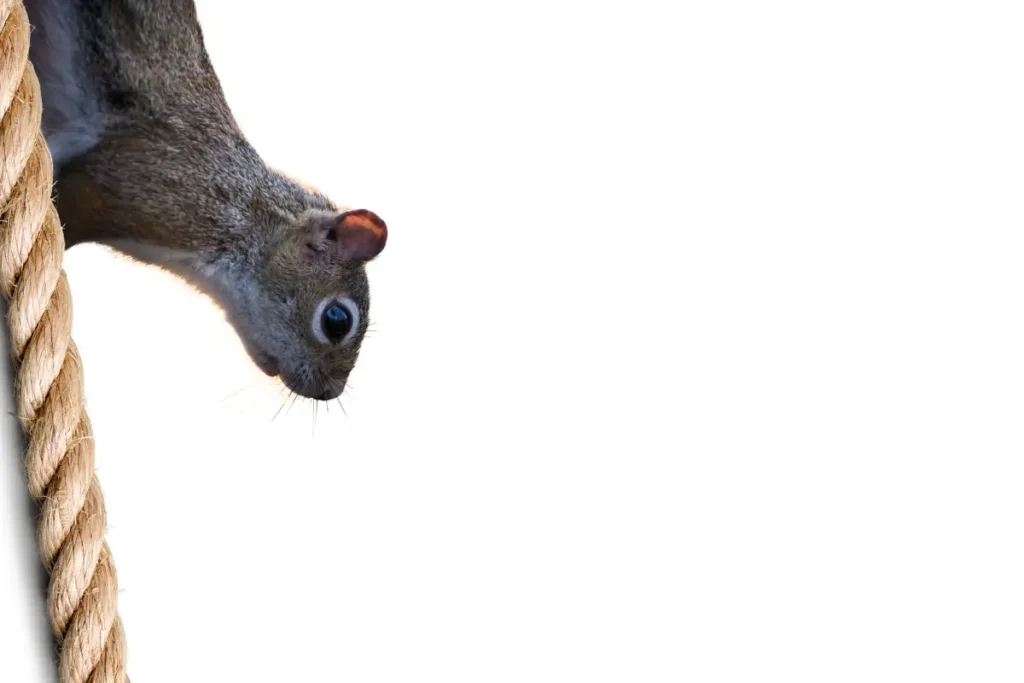
Yes, Squirrels can climb down the rope. These joints let squirrels rotate their back feet and climb objects down the rope. Tree squirrel ankle joints have evolved to be extremely flexible.
A squirrel can climb down the rope by rotating its feet 180 degrees, digging its claws into the trunk, and hanging from its back legs. Squirrels are skilled climbers. Some arboreal squirrels are extremely well adapted to climbing up and down ropes, whereas ground squirrels have nails or claws but mainly use them for digging.
Squirrels are designed for speed. Their thin bodies and powerful legs enable them to navigate obstacles and scale heights in record time easily. They have razor-sharp claws for gripping surfaces. This allows quick and agile movements as they climb up and down the rope.
What Is The Size Of The Rope That Squirrels Can Climb?
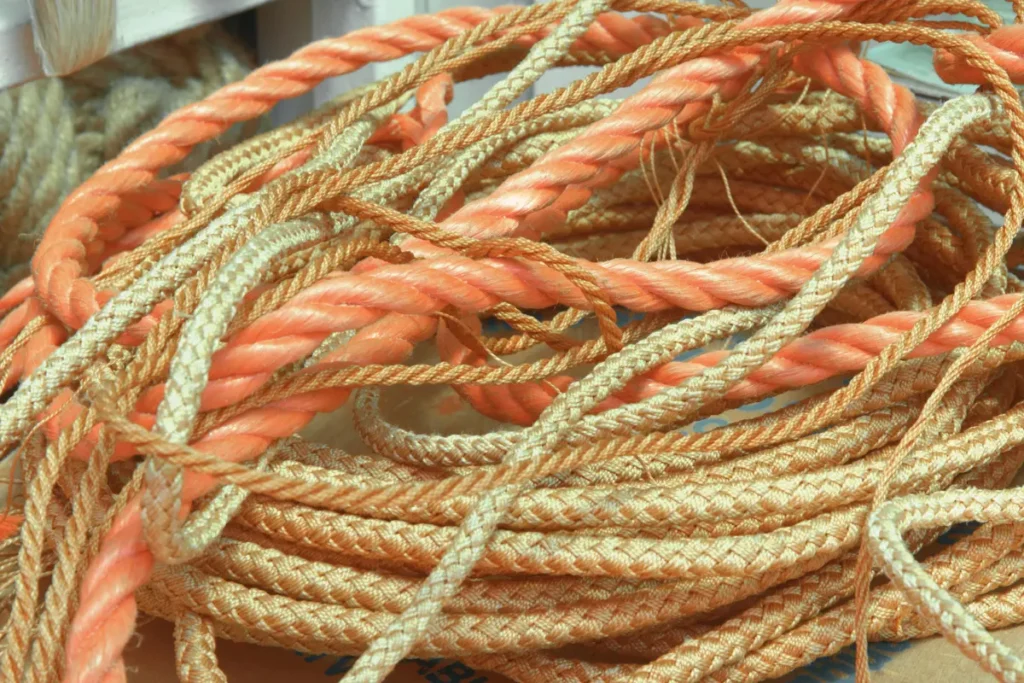
The eastern grey squirrel is one of the largest squirrel species. They can climb a rope that is about 10 to 11 feet long. However, because their claws cannot hold the tied portions, they require a specific running start.
Squirrels of various species can climb a horizontal rope. Gardeners use them to tie bird feeders and other decorative items. . Plastic pipes and poles are considered playthings by them. They select ropes with a large diameter that provide horizon consistency to their bodies.
As they jump 5 to 5.4 feet, they can protect the distance of a cord in a few hours. They can also climb anything close to the ground. They also make a lateral leap of about 11 to 12 feet. Because of their tail, they have incredible balance and can move effortlessly across electrical lines, cables, and clotheslines as if they were climbing a rope.
Do Squirrels Die While Climbing A Rope?
No, squirrels do not die while climbing rope, but they can die from falling if they land too far below them or fall from a great height.
They occasionally lose their grip on the rope and fall to the ground. As a result, rodents can inflict painful wounds on their bodies. They have delicate bodies, small organs, and quick movement. With the help of their claws, they can climb on various objects. Since the rope has a minimum distance from the floor, they never die from a drastic drop.
Squirrels have a low pull from gravity due to their small size and lightweight, and they have a high drag due to their stretchy bodies and puffy tails. While climbing the rope, When a small animal falls to the ground with less acceleration, the ground’s oppositional force is acting very little on it, likely to result in no harm.
Can Squirrel Climb Rope Ladder?
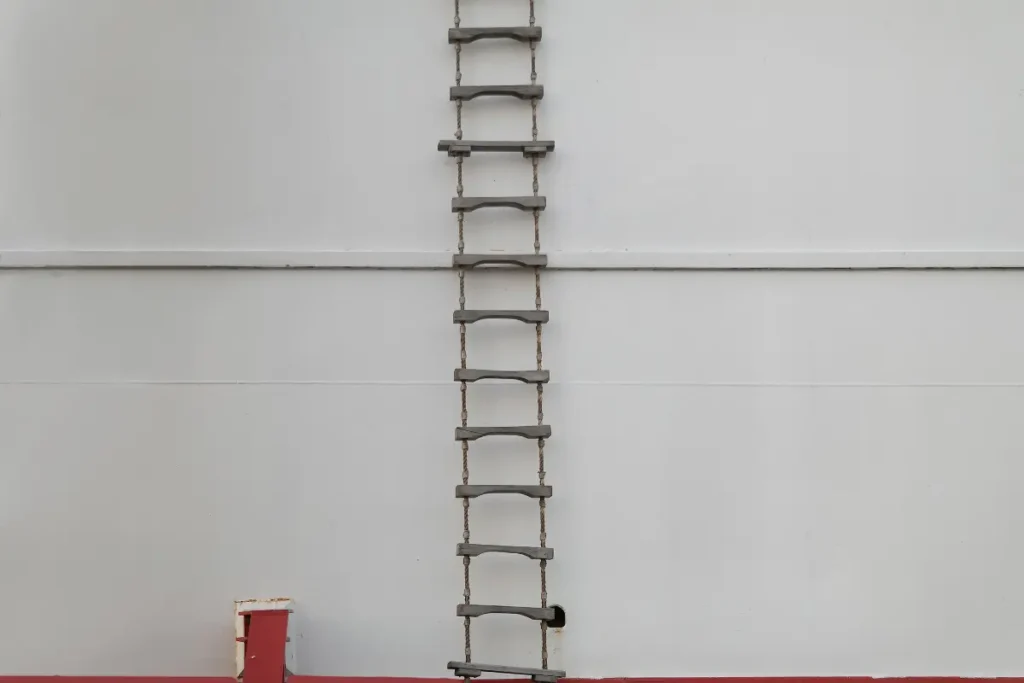
Yes, they can climb a rope ladder. They can use a rope ladder to climb the chimneys by jumping on their steps, and they can approach the chimneys with jumps and use them as play objects. They also see it as an escape route to enter other gardens, protect themselves from pests, and hunt for food.
Squirrels’ speed is determined by the height of the chimney and the size of the rope. In some cases, the tiny rodents construct their nests within the visible light. However, landscapers dislike having them inside chimneys because rodents can affect them. They do remove them using various hunting and killing techniques.
Few landscapers establish a rope bridge or rope ladder. They also use strings to support small items. In such instances, the squirrels will climb over the rope ladder and use it as an escape route. They defend themselves against both animal and human predators.
Is It Easy For Squirrel To Climb A Rope Ladder?
Yes, it is easy for squirrels to climb a rope ladder. But sometimes climbing a rope ladder can be difficult for someone unfamiliar with such a skilled task. The key to staying balanced is to keep your body centered on the rope ladder. However, as we all know, squirrels have evolved with several anatomical adaptations that aid in their stunts.
While some of their accomplishments appear exaggerated, such as the reported ability to jump 20 feet, they are clearly of superhuman vertical and horizontal leaps. Rope ladders are an adventure to use, whether for climbing into tree forts or escaping out a window in an emergency.
They can jump up to five feet vertically while climbing. This is because of the adaptability of their feet. Their bristly tails are crucially significant since they provide the necessary support when climbing up or down the rope ladder.
[5] Methods To Stop Squirrels From Climbing The Rope
The following are some methods for keeping squirrels out of your garden strings. These are five effective methods for keeping squirrels from climbing the rope.
Use Repellent Sprays
To deter squirrels, spray pepper-containing sprays on the hanging ropes. You can make a spray at home by combining peppermint oil and onion extracts. They flee the smell of these vegetables. You can make vinegar and garlic repellent spray.
Then, from the top to the bottom, spray it on the objects. Allow some time and then check their response. You can protect the string and plants from various types of damage. White pepper and garlic powder scents are also used to repel squirrels. The scent of pepper repels rodents as well.
Slippery Material

To repel the tiny rodents, rub a greasy substance all over the rope. In such cases, a thin coat of Vaseline can be applied to the horizontal object. It is one of the cheapest and least-damaging methods of repelling rodents from hanging strings.
Commercial lubricants such as WB-40 and synthetic oils can be used. Dip the cord in the slick substance or apply it with a brush. Because of the greasy effects, the tiny animals are unable to hold these objects. They abandon the effort due to repeated failure and the unbearable odor of lubricant.
Addition Of Birdfeeder
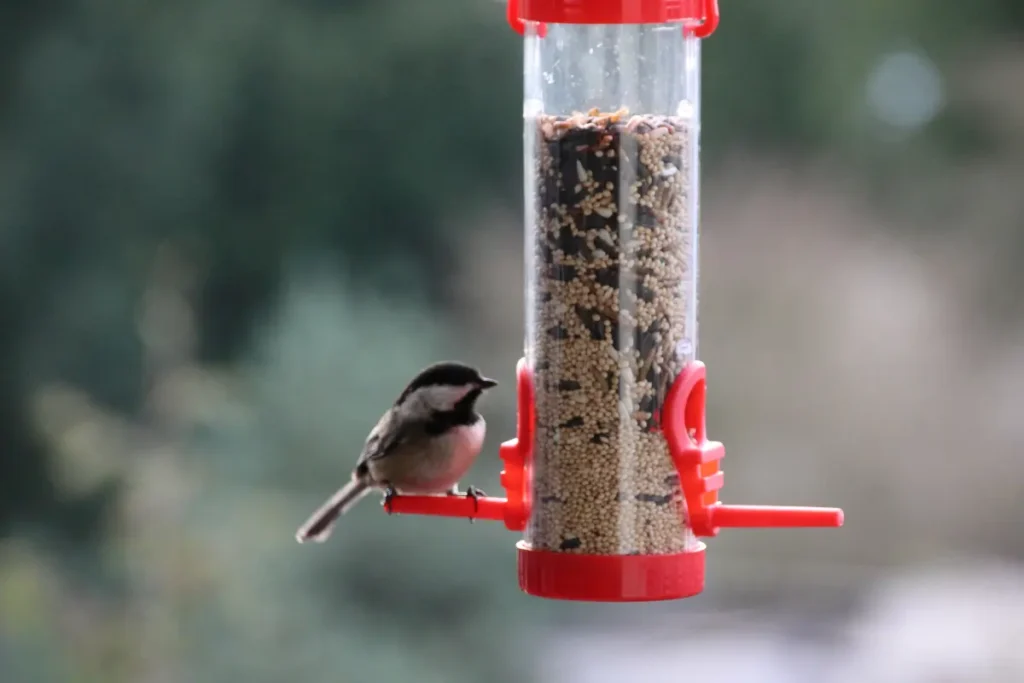
Because of their enormous size and the presence of birds, bird feeders provide care for squirrels. As a result, they avoid attacking these feeding objects and their surroundings. The horizontal hanging object near the bird feeder can be adjusted.
Tie one end to protect the containers while leaving the other side unsupported. It does, however, appeal to tiny rodents for chewing and playing. However, they are afraid of being hunted and dying if they approach these horizontal objects.
Wrap The Rope
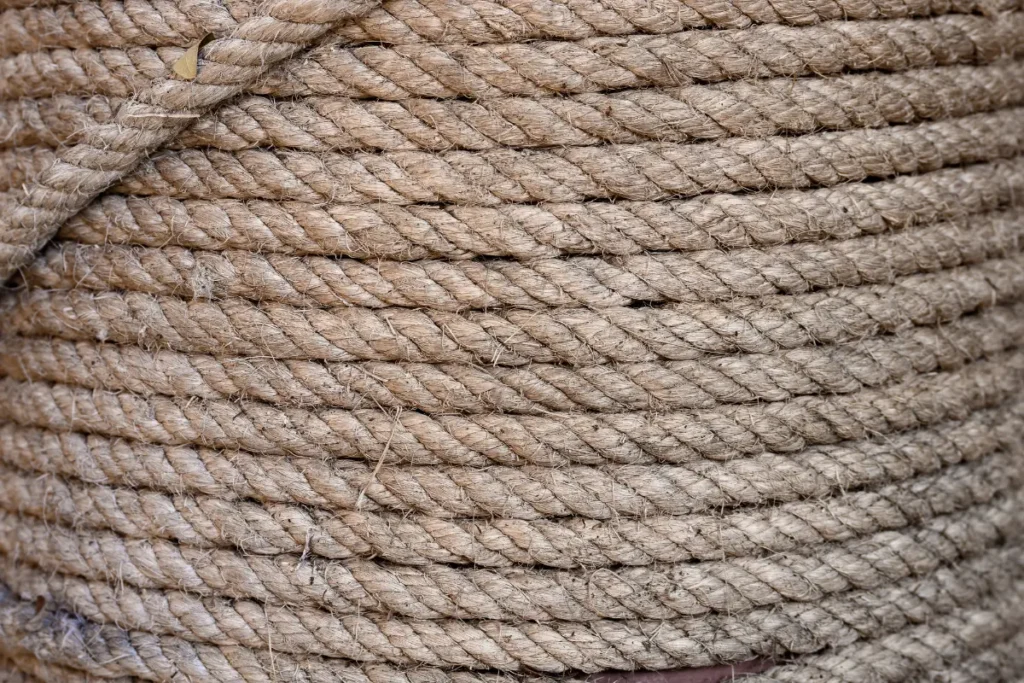
Wrap sheet metal around any ropes near power lines. The sheet metal’s slick surface will keep squirrels from climbing the ropes and gaining access to power lines.
Wrap the sheet metal around the tree and fasten it with strong wiring, bolts, or nails. Remove all ropes and tree branches from around buildings and power lines.
Squirrels frequently gain access to power lines via trees, ropes, and buildings. Squirrels will also eat rope, which would sometimes only defer the munching of your wires Squirrels aren’t quickly discouraged, and they’ll keep harvesting their crystal nuts irrespectively.
Citrus Solution On Rope
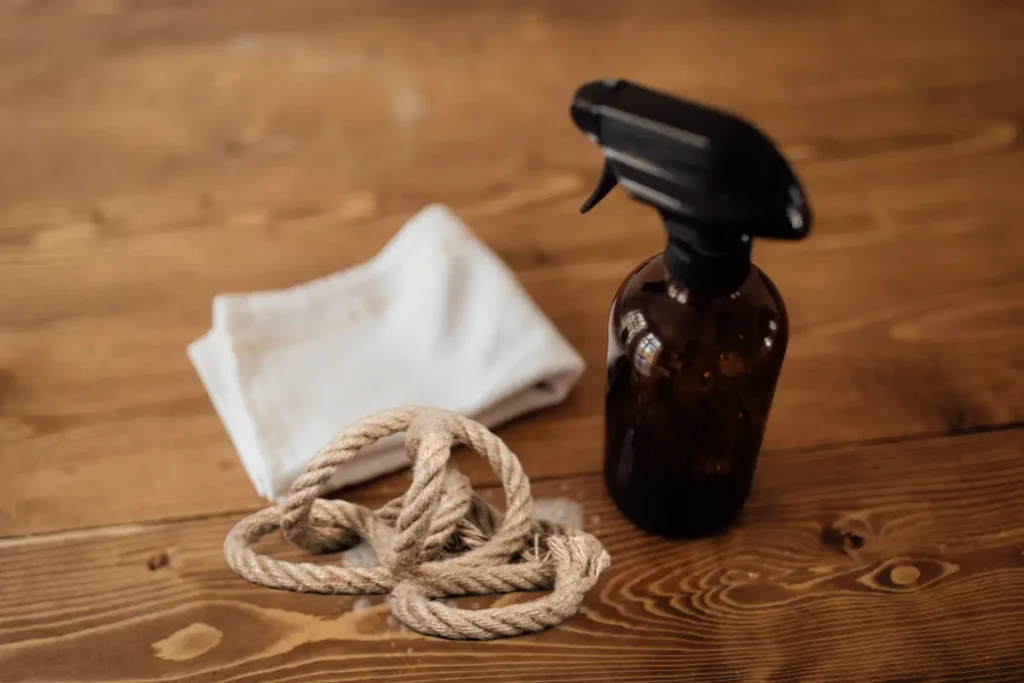
The first thing to try is applying a ready-made squirrel repellent, pepper spray, mint mouthwash, or citrus solution to the rope or string lights (some say predator urine is very effective, but that isn’t for everyone).
The smell and taste of these are deterrents, but they must be reapplied at regular intervals and after a rainy day. Owl decoys are a great option because almost all rodents are afraid of owls. These lifelike decoys should be placed near the wires or rope lights that need to be protected.
Conclusion
Squirrels can climb the free and open ends of the rope and hanging strings. Their climbing power is proportional to the distance between the cord and the ground. The rodents use their claws and teeth to attack the cords. Furthermore, they tightly hold the end.
Then they move their claws slowly across the rough surface, approaching the nearest chimney. They enter these decorative light objects in a matter of seconds.
It’s indeed up to you and the technique you use to keep the squirrels from climbing the rope. You could either get rid of it by using the methods discussed above.
References
Ow, S., Chan, S., Toh, Y. H., Chan, S. H., Lakshminarayanan, J., Jabbar, S., Ang, A., & Loo, A. (2022). Bridging the gap: assessing the effectiveness of rope bridges for wildlife in Singapore, Folia Primatologica (published online ahead of print 2022)
Keith E. Paskins, Adrian Bowyer, William M. Megill, John S. Scheibe; Take-off and landing forces and the evolution of controlled gliding in northern flying squirrels Glaucomys sabrinus. J Exp Biol 15 April 2007
